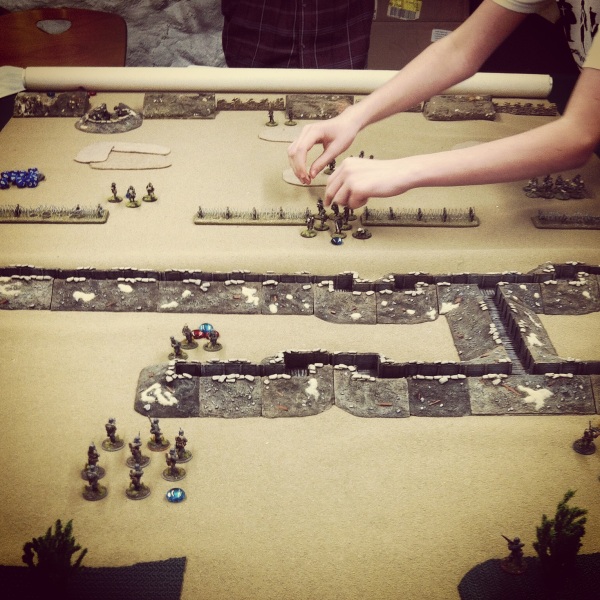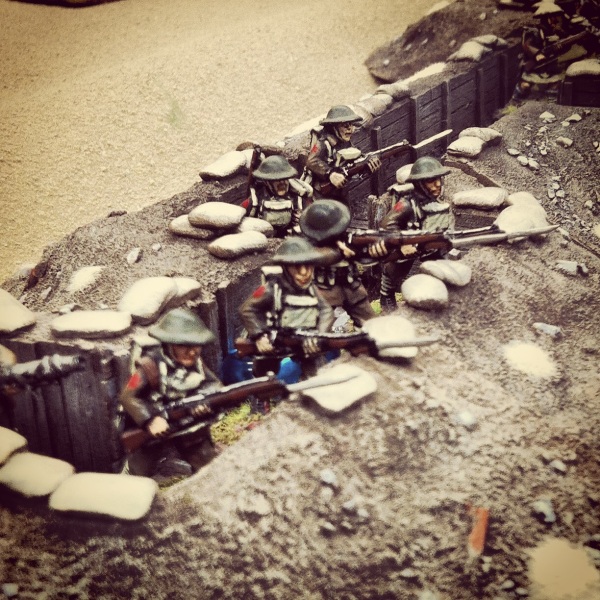In June 1914, a member of a group of fringe Bosnian Serbs assassinated Archduke Franz Ferdinand of Austria in an effort to split some of Austria-Hungary’s territory into a freed Yugoslavia. Through a series of cascading and intertwined alliances, the act of terrorism begat World War I and led to the death of millions.
Over a hundred years later in January 2015, two brothers self-identifying as Islamic terrorists associated with a Yemeni branch of Al-Qaeda forced their way into the Paris offices of the French satire newspaper Charlie Hebdo. The men shot more than 20 people, killing 11 and setting off a nationwide manhunt lasting for two days until the men were found and gunned down.
A month after the 2015 Paris shootings, a WWI-themed card game called Les Poulis was released by Sweet November, a French company which largely produces colorful games geared toward children. Carrying the line “L’amitié plus forte que la guerre?” or “Can friendship be stronger than war?,” the game prominently features the artwork of Bernard Verlhac who drew under the name Tignous and was one of those killed in the attack on Charlie Hebdo the month before. A century apart, the war which nearly destroyed early 20th-century Europe and the modern threat of international terrorism intersected in this curious little game.
Les Poilus is French slang for “infantry” roughly meaning “the hairy,” an appropriate title for a game which focuses on the experience of French soldiers in the trenches of WWI. The game’s designers wrote a manifesto of sorts for the game, here presented in the American printing under the translated title The Grizzled:
At the same level as literature and cinema, games are a cultural media which is undeniably participative.
There are no subjects it can’t broach, though some are more delicate than others. That of the life of the Grizzled is one of those.
Guided by the deepest respect that the suffering endured by these men has inspired in us, we’ve designed and tweaked this game with this constant concern.
In this earnest endeavor we’ve chosen to focus on the individual, with his preoccupations and his daily fears.
The only escape for the men we’ve portrayed is to use their solidarity, their brotherhood, and mutual assistance to save one another.
Without ever touching on the warlike aspect, “The Grizzled” offers each player the chance to feel some of the difficulties suffered by the soldiers of the trenches. Thus the emotions around the table will often be intense.
The path to victory may seem difficult, but don’t get discouraged – persist and survive the Great War!
 A player’s set-up from The Grizzled with the Mission Leader marker, Speech and Support tokens and Hard Knock cards
A player’s set-up from The Grizzled with the Mission Leader marker, Speech and Support tokens and Hard Knock cardsRather than attempt a grand take on the war, The Grizzled brings the war down to the level of six French friends who mobilize to action in the early August 1914 days when the war still seemed something heroic and noble. The cooperative game presents the soldiers fulfilling a series of missions in an attempt to deplete all the Trial cards covering a winning Peace card before the Morale Reserve cards covering a losing Monument card are used up.
 The six Threats from The Grizzled – Shell, Night, Whistle, Rain, Mask and Snow
The six Threats from The Grizzled – Shell, Night, Whistle, Rain, Mask and Snow
In each round, the mission’s leader chooses to deal 1-3 Trial cards to each soldier. Trial cards feature Threats of six types — Shell, Night, Whistle, Rain, Mask and Snow — or Hard Knock cards featuring various negative battle effects. In turn, players have a choice of actions. Threat cards may be played in the center of the table’s No Man’s land for the current mission, avoiding playing three of the same type and failing the mission. Hard Knock cards are assigned to the active player with immediate effect, and four Hard Knocks on the same player also causes a loss of the mission. Players can also choose to make a Speech, removing one type of Threat card from all player hands or use their Good Luck Charm to clear a card already played in the current mission. Finally, players may withdraw from the current mission and assign a Support tile to another player.
 The Peace and Monument cards from The Grizzled
The Peace and Monument cards from The Grizzled
Once all players have withdrawn from the mission, support tiles are passed to other players. Players with the majority of the support for that round may clear Hard Knock cards or refresh their Good Luck Charm. Cards are then moved from the Morale Reserve to the Trials pile according to the number of cards players still hold in their hands from the previous mission. With that the new mission leader deals cards and the next round begins.
The Grizzled is a powerful game in a tiny package and one of the most challenging games I’ve played in some time. The collaborating players need to tightly manage their own hands and plays while keeping an eye on all other the other players. As Hard Knocks mount up, effects on one player wind up rippling through the entire group, hindering the collective effectiveness in missions. Clearing Hard Knocks with Support becomes key late in the game but getting Support to the players needing it most also becomes a challenge.
Winning a game of The Grizzled feels like a real accomplishment. In the first week I had the game, I played about 15 games and my group of experienced gamers only won twice. Fortunately, a typical game runs about 30 minutes, so multiple games can be run in a sitting. It’s interesting the original French publisher states the game is for ages 10 and up while the American version from Cool Mini Or Not suggest ages 14 and up. The game’s play is intense but that’s the point, no matter the age of the group.
We’re still in the midst of the centennial commemoration of World War I, an enormously complicated war still argued over to this day. While fully understanding the war’s big picture may be a nearly impossible exercise, getting a view from the trenches in The Grizzled shows how the trauma of violence on individuals or small groups of friends or colleagues is an unfortunate timeless human reality.




































